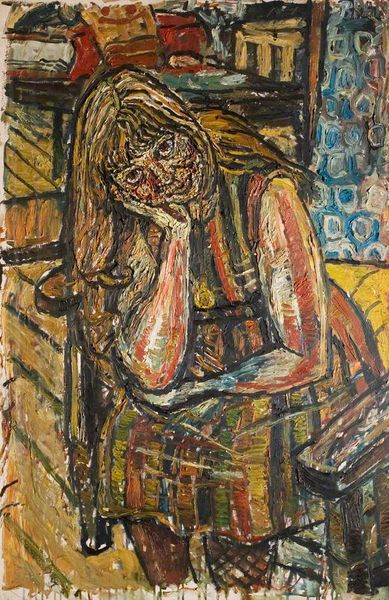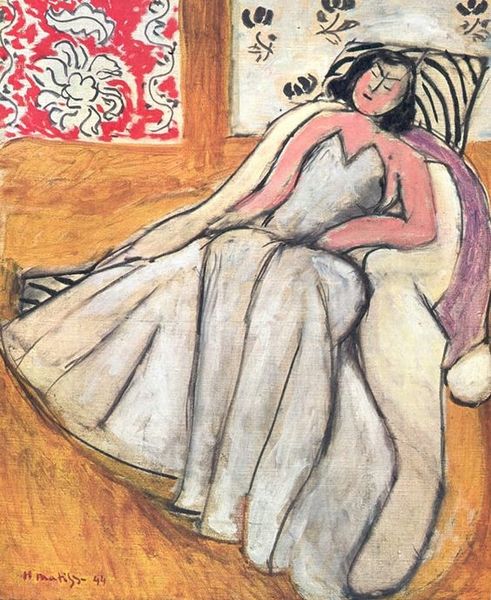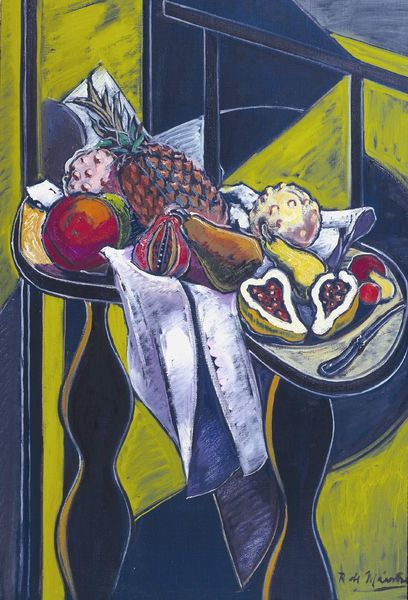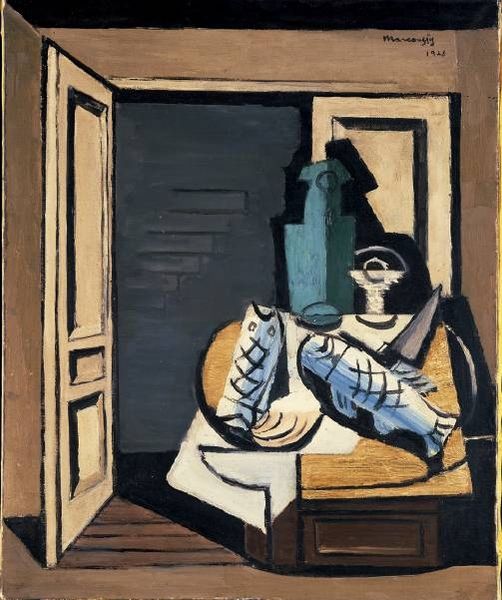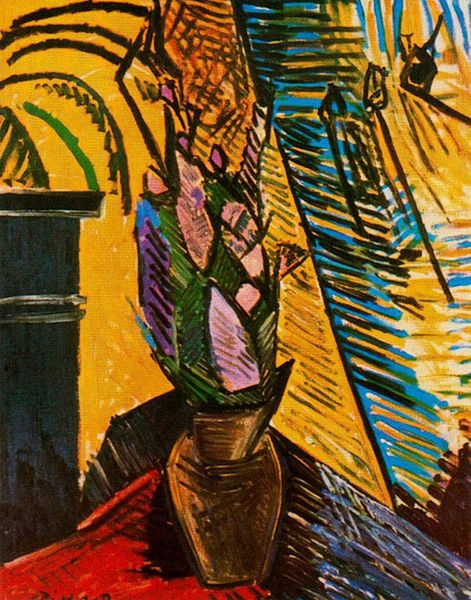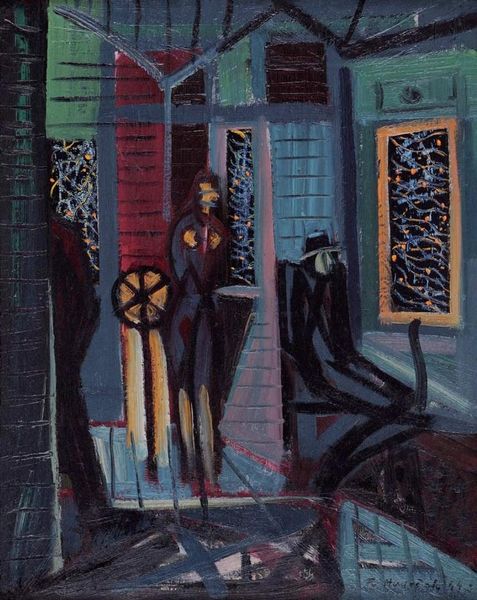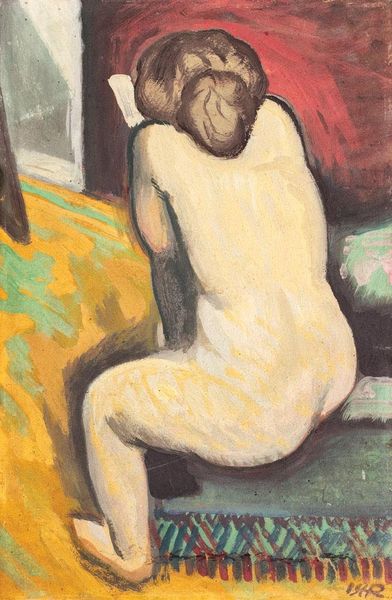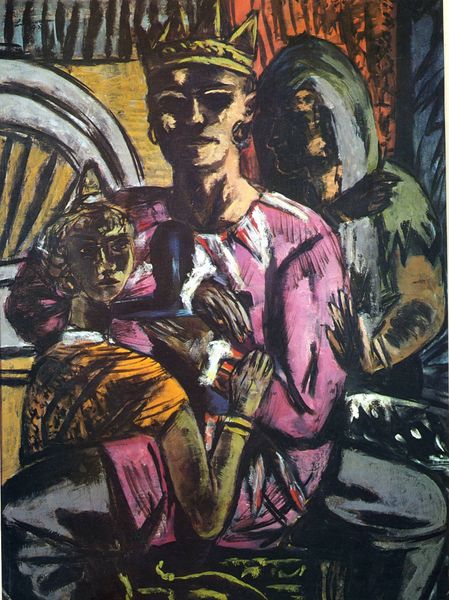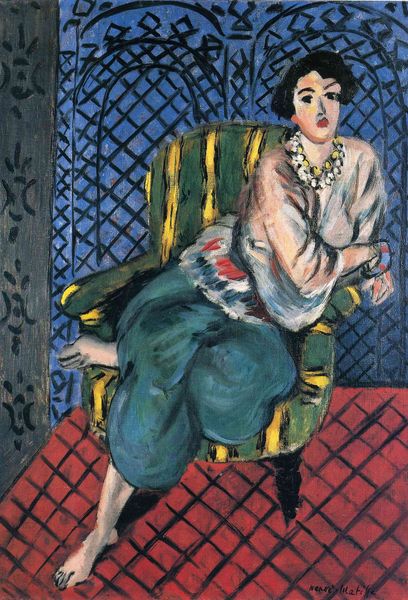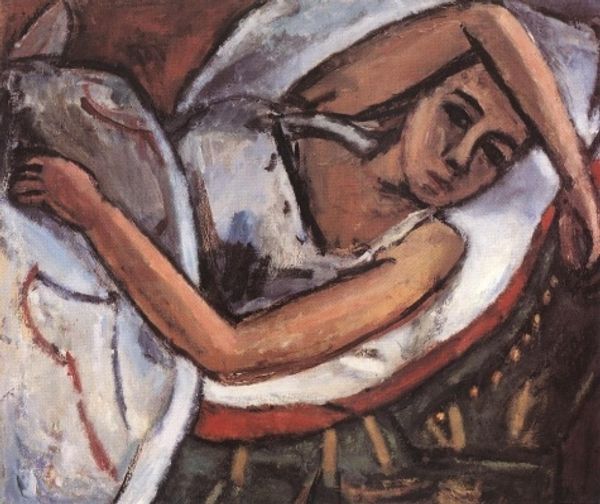
Copyright: Margit Selska,Fair Use
Curator: Welcome. We're looking at "Still Life," a painting from 1967 by Margit Selska, rendered with oil paint. What strikes you immediately? Editor: There’s a distinct tension, almost a melancholy here. The muted colors, combined with the somewhat roughly applied paint, create a sense of immediacy, but it also feels…strained. Curator: It’s interesting you pick up on the process so quickly. Look at the construction of the image itself. We have thick brushstrokes and, upon closer viewing, you notice the clear emphasis of the materiality and the layering of the oil paint. Consider her studio; how might the availability of specific pigments shaped this palette? What social conditions gave rise to such an image and texture? Editor: Absolutely, and in contrast to the application, let’s think about the sunflowers, the pine cones, and the vase, sitting atop the striped blanket. What meanings could they evoke within this still life tradition? The sunflowers have strong associations with warmth, the sun, life, and also loyalty. However, in conjunction with what I think is a striped towel—an emblem of domesticity and perhaps modesty—we are invited into a cultural symbolism beyond an image's material properties. Curator: The striped blanket also points to considerations of design and function in daily life, even perhaps referencing the means through which fabric-making could affect economies and homes, perhaps through international distribution, a common modernist approach. It begs the question: How does art mirror broader societal labor practices? Editor: That is true. Yet I believe the deeper narrative centers around the tension between decay, death and nature and culture, rebirth, even beauty, encapsulated within these recurring visual metaphors. The arrangement almost forms a tableau of emotional echoes, inviting us to contemplate the fragile balance within both ourselves and within the world. Curator: I appreciate you grounding us to emotional impact and symbolic representation here; the social relations certainly work in tandem. What, if anything, feels unresolved here? Editor: Perhaps the question becomes: what objects from our current daily landscape will, fifty years from now, be seen to communicate similar depth when rendered so personally? I am left wondering what remains, but more importantly, why it resonates.
Comments
No comments
Be the first to comment and join the conversation on the ultimate creative platform.
